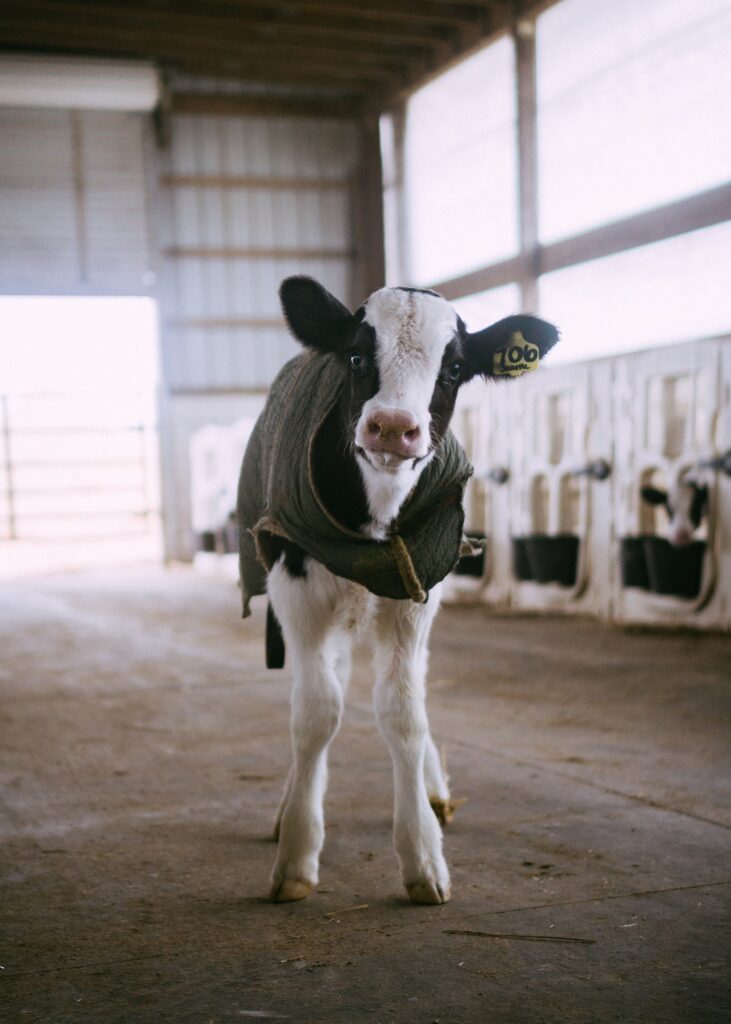
(Photo by Amber Kipp via Unsplash)
A New Yorker who cycled the Katy Trail this summer told me, delight still in his voice, that the highlight of that blazing hot ride was coming upon cows swimming in a creek.
Werner Lampert, an Austrian sustainability expert, used to climb to an alpine pasture and recited German Romantic poetry to the cows, who listened as rapt as a first night audience at the Met. When he finished speaking, they wandered off—but when he crested the hill the next morning, they were there waiting for him.
I would think this poetic license or wonder if he accidentally chose the best patch of fresh mountain grass as his stage, except that I have seen videos of a jazz quintet performing for cows, and they do make appreciative audiences.
They are appreciative creatures in general. Nietzsche was so taken with the Braunveih mountain cattle that he took long walks alongside their Alpine pastures while writing Thus Spake Zarathustra. Noticing their calm patience and utter lack of irritability, he decided they had reached ataraxia, the serene equanimity coveted by the Stoics. “Unless we change and become as cows,” he wrote, “we shall never enter the kingdom of heaven.”
The remark startled his European audience, whose religions did not pronounce the cow sacred and who seldom thought about the time when the sacrifice of a cow was the most appropriate gift to God. But in the Hindu Vedas, the cow was the mother of all gods.
Her serene temperament does not appeal to the contemporary western world. “Total contentment is only for cows,” Bette Midler scoffed—but I envy them. “If I ever have a nervous breakdown,” I tell my husband regularly, “put me somewhere with cows.” A private quirk, I assumed—until I read that Charles Dickens longed “to retreat to a Swiss farm, and live entirely surrounded by cows.”
In the Netherlands, cow hugging (koe knuffelen) is both recreation and therapy, and if you have ever leaned against the broad, warm, slow-breathing side of a cow and felt her curve her neck to hold you close, you will understand why.
Cows see more than we realize. Hariana cows, writes Lampert, insist on authenticity and will “go quite crazy” if someone lies in their presence. Mainly, though, they contain their criticism. “Cows are among the gentlest of breathing creatures,” Thomas de Quincey wrote. “None show more passionate tenderness to their young.” People who shelter cows without demanding profit or slaughter tell me they have observed birth rituals in which the cows gather in a circle to watch the calving, and the matriarchs then line up and meet the newborn one by one. Grief rituals form the same circle.
We do not see these rituals, because we separate families, isolate cows in stalls, drain their milk and then their blood. And now we are annoyed with them because they fart, pee, and poop, and that is messing up our climate.
The solution now making headlines? Potty-train them. After a radio interviewer jokingly suggested this as an environmental remedy, scientists took up the challenge. Now they have successfully taught young cows to use a MooLoo, holding it until they enter a gated area where they will receive a molasses or barley treat after relieving themselves. The nitrogen in their urine (which fills eight-gallon buckets a day) creates toxic ammonia when it mixes with feces in a barnyard, and microbes then convert that ammonia into nitrous oxide, one of the greenhouse gases that now plague us. Bovine bathrooms can eliminate that problem while easily collecting manure for fertilizer.
Will the technique scale up, perhaps with a few more johnny-on-the-spots dotting a larger area and the treats dispensed automatically? That remains to be seen. The training itself was surprisingly easy: Young cows learned in fifteen days, a record that would leave most parents weeping with envy.
We should be surprised? As Jane Goodall notes, “They are far more intelligent than we ever imagined.”
And we are less appreciative.
Read more by Jeannette Cooperman here.
